
Customer Effort Score (CES): What, Why, When & How
As customers, we are all familiar with the feeling of being upset when a task requires more effort than necessary. Whether it’s reaching for a snack on a high shelf or navigating a complex website, the extra effort can quickly demotivate us.
This concept is equally applicable in the world of online business.
That’s where the Customer Effort Score (CES) comes into play. This popular survey type assesses the amount of effort customers expend when doing business with a company and can provide useful insights into areas for improvement.
You can improve the customer experience and drive success by understanding how customers feel about the effort required to interact with your business.
So, today, we’ll delve deeper and examine the what, why, when & how of Customer Effort Score (CES). Moreover, we will go over the benefits and drawbacks of the CES strategy and going offer you practical advice for raising your company’s unique score.
What is Customer Effort Score? – CES meaning
Customer Effort Score (CES) is a metric that measures the effort customers put into interacting with a business. It is a way to gauge the ease of a customer’s experience and understand what areas of the customer journey need improvement.
The CES is derived from a customer satisfaction survey and reflects the amount of effort a customer had to exert to use a product or service, find the information they needed, or get an issue resolved.
The metric is usually measured by asking customers to respond to a statement like “[Name of the organization] made it easy for me to handle [name of issue]” with a 1-5 or 1-7 scale rating, where 1: strongly disagree and 5 or 7: strongly agree.
The less effort required, the better the CES—and, arguably, the higher the customer satisfaction. Here’s an illustration of a survey measuring the Customer Effort Score:
Ask your customers this question with a customer feedback form.
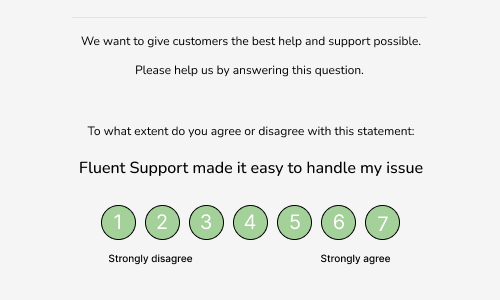
Imagine a customer having to navigate through pages of a knowledge base article to find the one they need, that would be a lot of effort.
On the other hand, if the customer calls a service rep and gets their refund processed immediately, that would be minimal effort.
There’s ample evidence that, at times, the ease of a given experience is a better indicator of customer loyalty than simply measuring customer satisfaction.
In today’s increasingly competitive landscape, customer loyalty is a true pillar of successful businesses.
That’s why CES is popular with customer success teams. Instead of asking how satisfied the customer is, you ask them to gauge the ease of their experience.
By understanding the effort required to interact with your business, you can make data-driven decisions.
Why Customer Effort Score (CES) is important
The Customer Effort Score (CES) first gained attention when Harvard Business Review published an article ‘Stop Trying to Delight Your Customers‘.
Here, they explained that companies should focus less on “exceeding expectations” and “delighting customers” and more on resolving issues quickly and effectively.
This is because, according to HBR, reducing customer effort is what builds loyalty, not delighting customers.
The most frustrating customer experiences are those that involve multiple channels and interactions. For example, having to re-explain a problem, switch from the web to the phone, transfer to another representative, or contact the company repeatedly about the same issue. These experiences lead to frustration and customer churn.
Measuring CES helps businesses to improve the most painful parts of the current customer journey, making the overall customer experience better. This in turn creates more loyal long-term customers, improving the bottom line of a business.
When to use Customer Effort Score (CES)
When it comes to using Customer Effort Score, timing is key. It’s important to send out a CES survey at the right moment to ensure that the information you’re collecting is relevant and accurate. Here are a few key moments when using CES can be particularly valuable:
Immediately after a purchase or subscription
This is a great time to collect information about the level of effort customers put into making their purchases. They will have just completed an action, so the information you’re asking for is fresh in their mind.
Shortly after an interaction with customer service
CES surveys are particularly useful for understanding how well customer service interactions are resolving pain points for customers. Send out a survey immediately after a customer service touchpoint, such as after an email support ticket is resolved. It is to determine how effective it was in resolving the issue.
To supplement product teams’ UI and UX testing
CES can be used to collect feedback on how well the user interface supports new feature adoption and to identify moments when customers begin to feel frustrated and lost.
Other key customer touchpoints
Customer effort is particularly relevant if you support your customers over multiple channels. In fact, the modern concept of omnichannel service is all about reducing friction between service channels and minimizing customer effort.
To compare with other metrics
Once you start collecting feedback from your customers, you can compare CES results with other metrics such as CSAT and NPS. This way you can get a whole new layer of customer feedback that colors your data.
With more context, you can pinpoint the processes and channels that are lacking and take steps to improve them.
Pro tip: To get even more value out of your feedback program, create survey analytics dashboards to track key metrics alongside one another. This way, you can view CSAT, NPS, CES, and other metrics all in one place. Thus, you have a constant, real-time view of customer feedback and you can take action quickly.
Customer Effort Score calculation
Customer Effort Score (CES) = Sum of Customer Effort Ratings ÷ Total Number of Survey Responses
Note: To convert the ratio into percentage (%) multiply the result by 100. This will make it easier for you to interpret and compare.
The sum of customer effort ratings: It refers to the total or cumulative scores assigned to customer effort in a given context or scenario.
Try our live calculator to calculate Customer Effort Score (CES):
Powered by Fluent Forms
Now, here’s the step-by-step process for calculating your Customer Effort Score (CES):
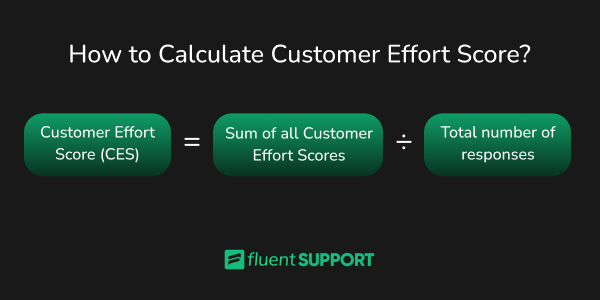
1. Create the survey question: Ask customers to rate the statement “The effort required to solve my problem was low.” On a scale of 1-7, where 1 strongly disagrees and 7 strongly agrees.
2. Collect survey responses: Send out the survey to customers who have recently interacted with your business and gather responses.
3. Calculate the score: Add up all the responses and divide by the total number of survey responses. The resulting number will be your Customer Effort Score.
4. Analyze the data: Examine the data to see where customers are having the most difficulty and what areas of your business need improvement.
5. Take action: Implement changes to improve the customer experience and reduce the effort required to interact with your business.
Pro tip: Use a survey analytics tool to automatically calculate your Customer Effort Score and track it over time. For example, SurveyMonkey, Qualtrics, NiceReply, SurveySparrow, etc. These will allow you to easily see how your score changes as you make improvements.
Use this formula to measure the overall customer satisfaction level.
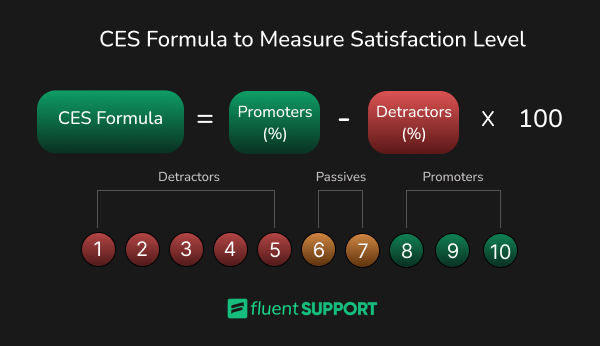
What is a good CES rating?
The scale you use will determine how well your Customer Effort Score turns out. On a scale of one to seven, with one denoting minimal effort and seven denoting great effort, a score of three or less is typically seen as a respectable score.
This indicates that customers are not encountering any major difficulties when dealing with your company. A score of six or above, on the other hand, denotes that clients frequently encounter difficulties and that it takes a lot of work to communicate with your company.
It’s essential to understand that CES is just a measurement of the effort needed to interact with your organization rather than a measure of customer happiness. So, for more insights, you also have to measure CSAT, NPS, etc.
Types of CES surveys
When it comes to conducting a Customer Effort Score (CES) survey, there are different approaches you can take to gather feedback from your customers.
The type of scale you choose and the type of information you’re looking to gather will determine the structure of your survey. Here are the 4 most popular types of CES Surveys that we can see regularly.
1. Numbered scales
This type of survey is structured around a question that asks customers to rate the ease of use on a numbered scale. For example, “How easy was it to solve your problem today?”
Respondents are then asked to rank the ease of use on a scale of 1-7, with higher numbers indicating minimal effort and lower numbers indicating significant effort.
This type of scale can be confusing for some, so it’s recommended to color code the scale from red to green for clarity.
2. Emoticon ratings
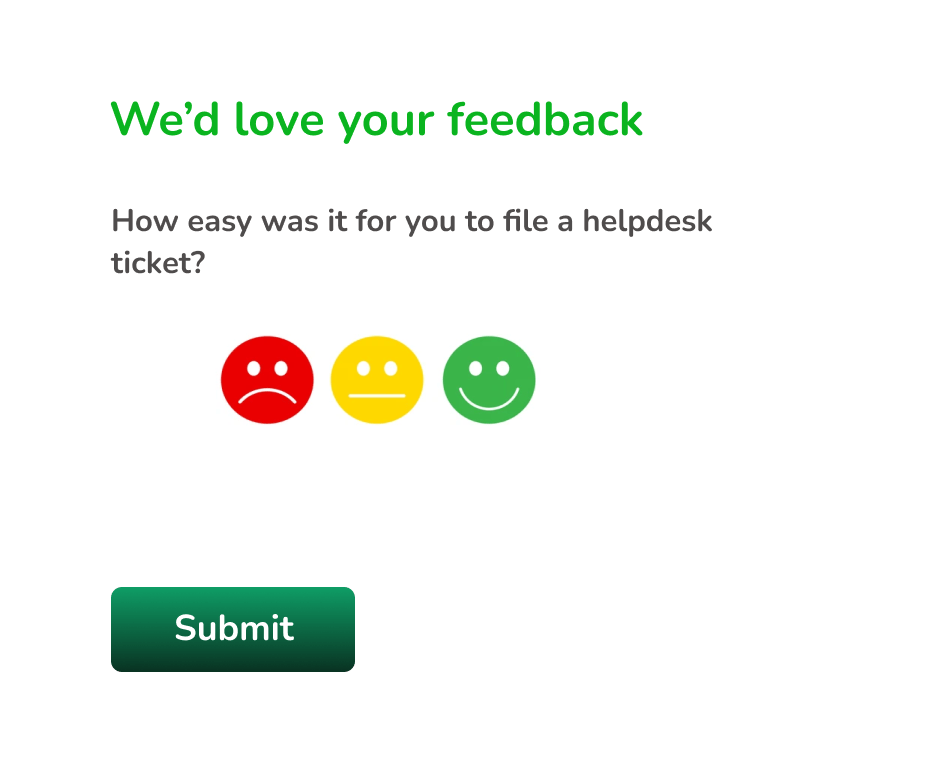
This type of survey is ideal for collecting feedback on minor aspects of your website or service. It’s easy to understand and takes only seconds to answer, increasing the likelihood of responses.
The question can be a simple one such as “How easy was it to use our service?” or a statement such as “[Brand] made it easy to solve the issue” and customers are asked to respond with an emoticon that best represents their feedback.
3. Likert scale

This type of survey is based on a Likert Scale, which is a psychometric scale used in research questionnaires. It’s a simple, non-question statement such as “The checkout process was easy to navigate.”
Users are asked to rate how much they agree or disagree with that statement on a 7-point scale, with options such as “strongly disagree” to “strongly agree.”
4. Thumbs up & down binary
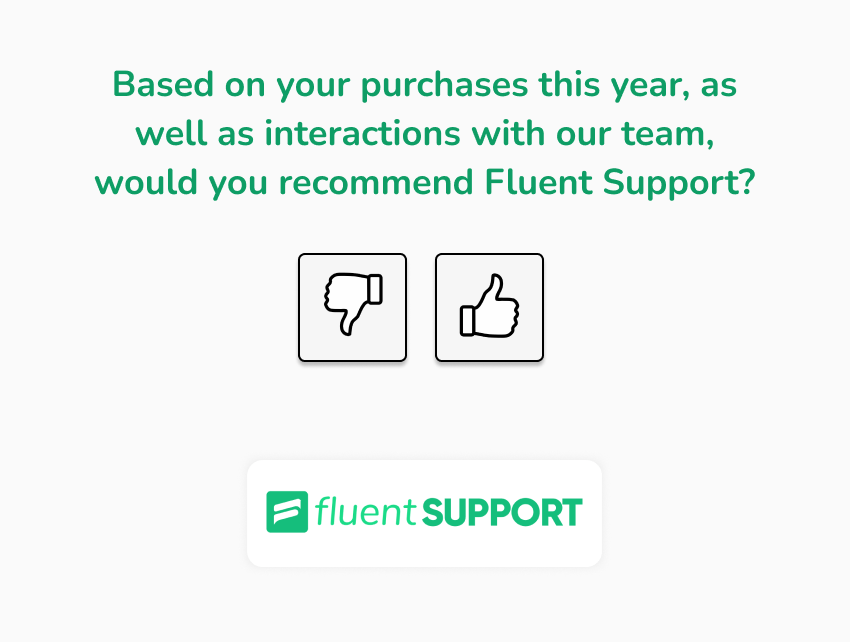
This type of survey is a simple binary option, where customers are asked to rate their experience by giving a thumbs up or thumbs down.
It is a quick and easy way to collect customer feedback and can be used as a supplement to other types of CES surveys to get a more comprehensive understanding of customer experience.
Pros and cons of CES surveys
Like any other data-gathering approach, utilizing CES surveys has its own set of benefits and drawbacks.
Pros of CES
- A strong predictor of future purchase behavior and referral likelihood.
- Highly specific and actionable, allowing for granular views of distinct areas of your business.
- Gives a clear view of areas that need improvement.
- Easy to implement.
Cons of CES
- Does not provide information on the customer’s overall relationship or satisfaction with your business.
- Lack of customer segmentation by customer type or buyer journey.
- It only measures specific experiences, rather than the overall effort required to interact with your business.
- Surveys must be sent immediately after customers have the experience to avoid inaccurate results.
10 common Customer Effort Score questions (Examples)
The image below shows some of the most common questions that are frequently asked in CES surveys.
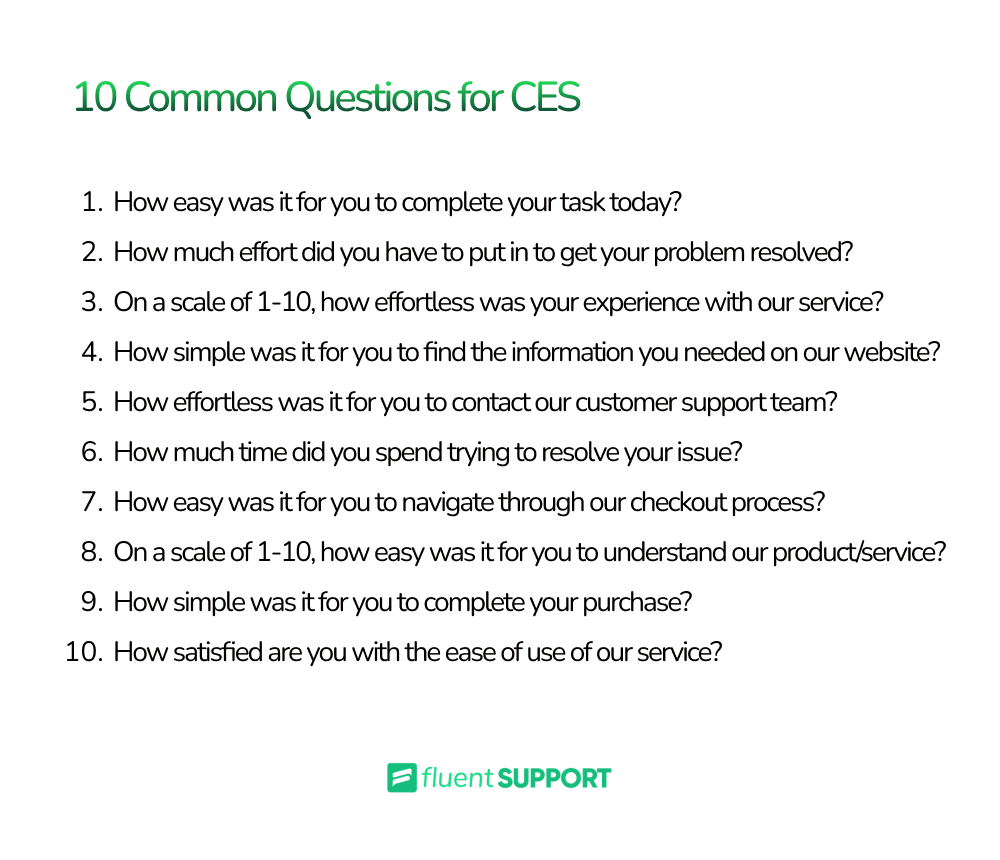
How CES compares to NPS and CSAT
The CES measures how simple or complex customer interactions with your company are. it’s a valuable indicator for figuring out how your company compares to the competition in terms of user experience.
However, it doesn’t provide a whole picture of consumer satisfaction. Customer Satisfaction (CSAT) and Net Promoter Score (NPS) are relevant metrics in this context.
While CSAT measures immediate satisfaction with a good or service, NPS measures overall consumer happiness and loyalty. You may acquire a more comprehensive understanding of client experience and satisfaction by combining these indicators.
It’s vital to keep in mind that NPS and CSAT have their own limits and should be used in conjunction with follow-up questions to elicit more information.
Utilize the benefits of CES and enhance customer satisfaction
In conclusion, the Customer Effort Score (CES) is great for understanding how easy it is for customers to interact with your business.
By measuring the effort required to solve problems, navigate your website, or complete a purchase, you can gain valuable insights into areas of your business that need improvement.
It’s important to note that while CES is a strong predictor of customer loyalty, it doesn’t provide information about overall customer satisfaction or brand perception.
To get the most actionable feedback, it’s best to measure CES alongside other customer feedback metrics like CSAT and NPS.
By measuring all three together, you can gain a comprehensive understanding of customer experience and make data-driven decisions to improve it.
So, don’t wait, start implementing CES today and see the positive impact it can have on your business in the future.






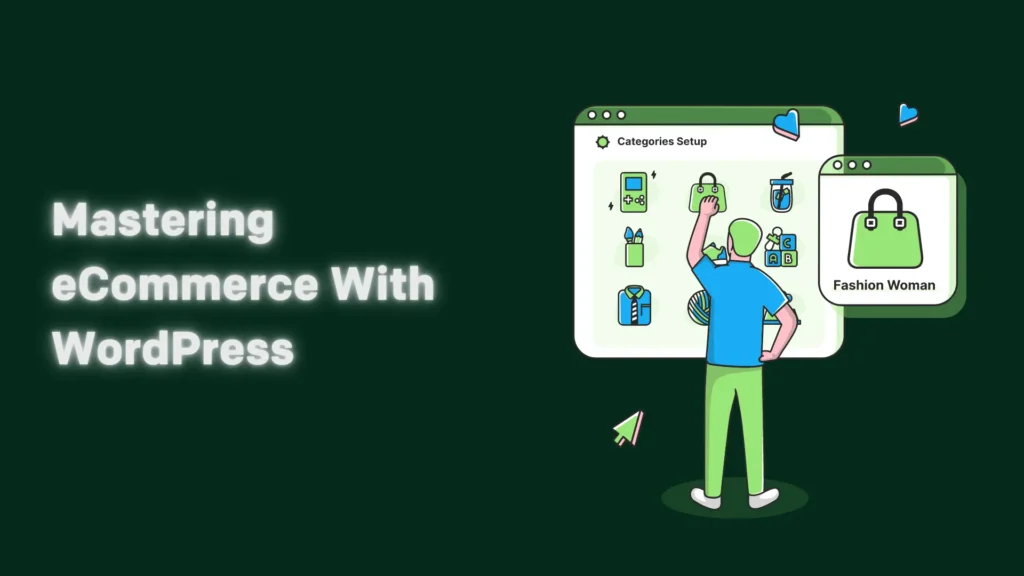




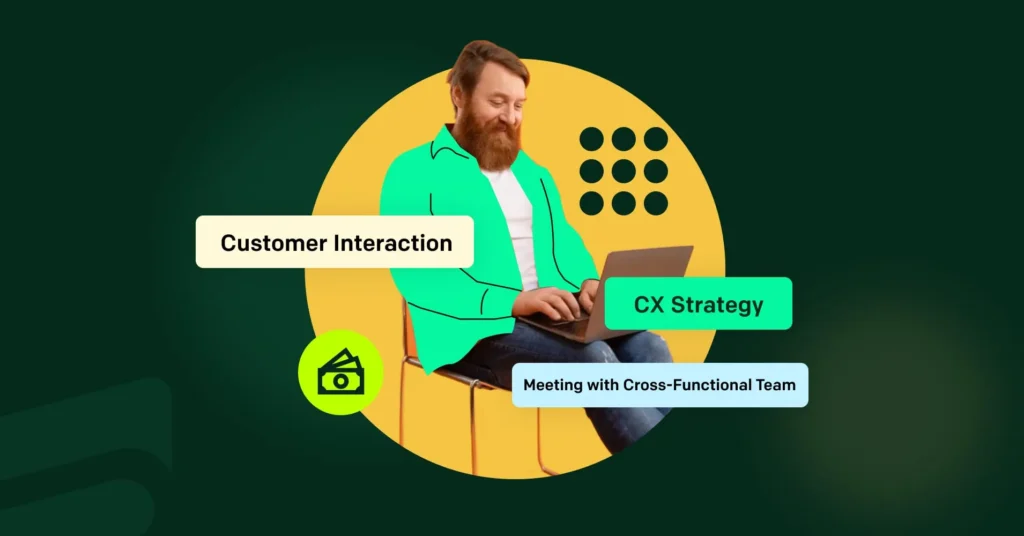
Leave a Reply